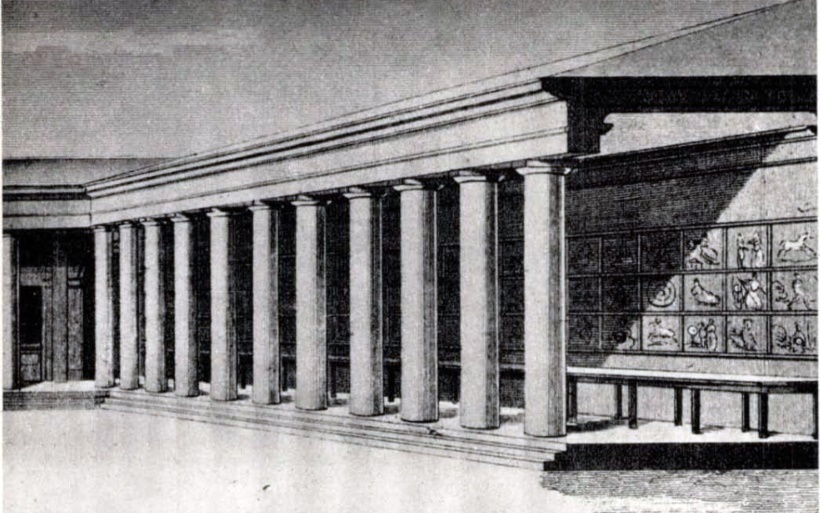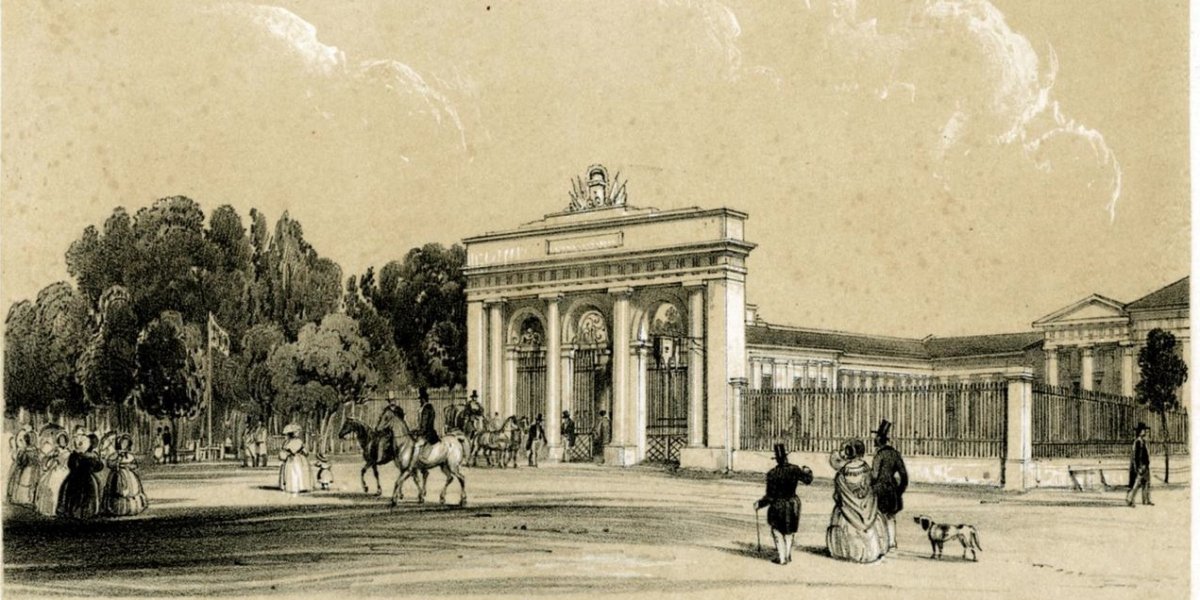The city of Pest required that the members of its guilds participate in shooting practice every Sunday. Those who remained absent were fined six thalers. Maria Theresa later decreed that all citizens should learn to shoot for at least one year. City folk also organized civilian militias with ornate uniforms, flags and when they met for shooting practice, other forms of entertainment would follow.
Shooting practice also necessitated a suitable building. The shooting range Buda was opened in 1696 on present-day Széna Square and was then moved to modern-day Marczibányi Square. The street name Lövöház Street (Shooting Range Street) preserves the memory of this practice.
There were several shooting ranges in Pest. The first stood near Hatvan Gate, near present-day Astoria, from where it was moved to the vicinity of what is today Királyi Pál Street.
Members of the civilian militia would shoot at square targets. Those who hit the centre of the board, or the nail placed there, "hit the nail on the head." Their names were recorded, the targets restored, painted and placed in the lobby of the building. On 28 July 1792, Emperor Francis II (styled King Francis I in Hungary) also attempted this feat and naturally hit the nail on the head.
The civilian shooting range opened in 1824, as seen on an etching by Carl Vasquesz. The building was destroyed by the icy flood of 1838 (Source FSZEK)
Alongside shooting, the ranges also made space for the other entertainments and events of the city militia. The militia of Pest had a choir, while that of Buda formed a band. The buildings also housed several gala dinners and balls.
As mentioned above, the Pest Shooting Range stood in Királyi Pál Street in the first half of the 19th century. However, by the 1820s, the building had fallen into disrepair and was redesigned by József Hild and András Zambelli. According to some, the beauty of the classicist building was comparable to that of the National Museum. A park, cafés and smoking rooms awaited visitors in and around the building. However, this communal building was washed away by the icy floods of 1838.
Following the events, a quick decision was made to construct a new shooting range. However, the location near Calvin Square was no longer suitable. The new building was placed slightly further from the city centre. The new range was also designed by András Zambelli, who drew on his plans for the previous building. The ornate classicist building formed a U, enclosing an internal courtyard with an arcade of columns. The decorated targets of shooters who hit the nail on the head were displayed in these arcades when guns were also cleaned and polished. The shooting itself happened in the courtyard.

The arcades of the new shooting range on the present-day Lövölde Square. The painted targets can be seen hung on the wall, the tables were used to prepare the guns. (Domonkos Perlaska: A cross-section of the fifth shooting range in Pest, detail. Copper-plate engraving, 1840. Source: Budapest, 1967 issue 12. Péterné Czifka: About civilian shootign ranges in Pest)
The Shooting Range was opened ceremoniously on 9 July 1840 by the Palatinate. Several articles claim that the day only marked the laying of the foundation stone. However, contemporary sources clearly indicate that this was the grand opening. The palatine even toured the building, as recorded in the Hírnök (Herald) newspaper on 16 July:
A three-coloured carpet was placed from the lattice door leading to the courtyard of the shooting range all the way to where the memorial stone was laid. His Highness, the Palatine, made his way along with this between a double line of the Pest militia. Upon reaching the façade of the building, his Highness, the Palatine, replied to the welcoming speech of the Mayor, Mr János Tölgyesi, with grand and kind words. His Majesty then completed the grand deed of the opening with a silver hammer. His Majesty was then followed by a series of cheers through the halls of the shooting range to the balcony of the building, where his Imperial Royal Highness spent time gently conversing with the delegations of the surrounding counties and towns. Finally, his Highness left the Shooting range among the music of horns and the cheers of the people."
Palatine Joseph visited the institution every year at the Shooters Festival. He shot down the range multiple times, and not badly. Like his predecessor, the new range also housed several events and balls and was a central venue of social life in Pest.
The ornate building remained, and even the square was renamed in 1874. Following the war of independence in 1848–49, shooting associations were temporarily disbanded but could reform in the 1860s. By the time they had lost their military significance, as in modern warfare, it was not citizens on walls that defended cities. The shooting associations became a sort of sports club and shooting a pastime for their members.
Lövölde Square after 1894 photographed by György Klösz (Source FSZEK)
The two rival shooting clubs from Pest and Buda finally merged in 1889. In fact, the Pest club was incorporated into the larger organization of the Buda side. The Budapest Civilian shooting Association was formed, which operated in the range on Marczibányi Square. The range in Pest was closed and eventually demolished in 1890. Only the name of the square now reminds of the building that once stood there.
Cover photo: Rudolf Alt: The civilian shooting range of Pest, on the present-day Lövölde Square. Stone print, 1845 (Source: FSZE, Budapest Collection)





































Hozzászólások
Log in or register to comment!
Login Registration